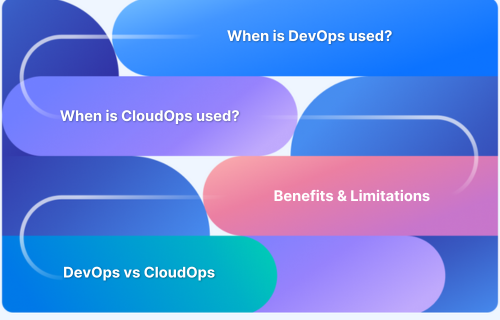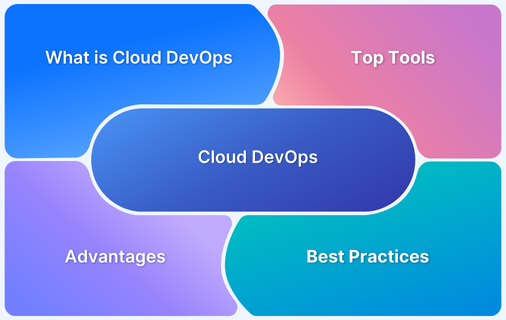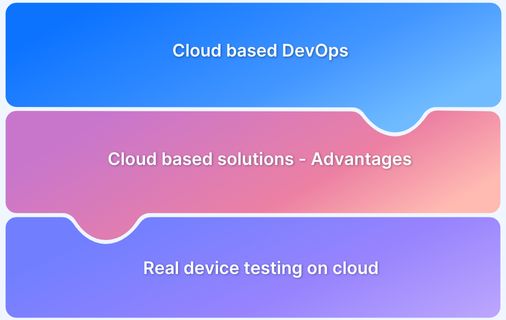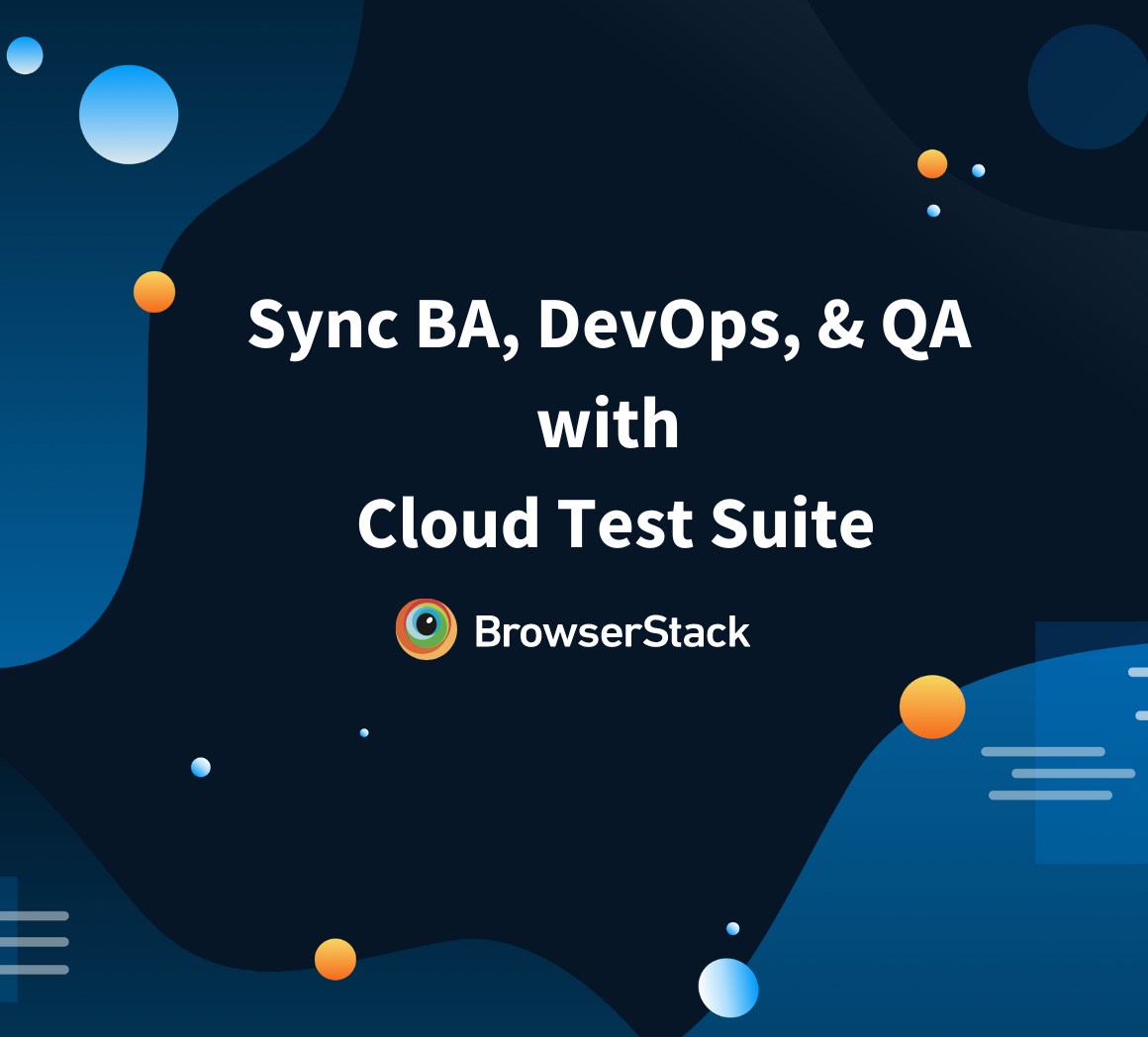CloudOps and DevOps are often mentioned together, but they serve distinct purposes. While DevOps focuses on automating software development and deployment, CloudOps ensures the smooth operation and optimization of cloud-based infrastructure.
Understanding their differences is key to building efficient, scalable, and high-performing systems.
Overview
What is DevOps?
DevOps is a software development approach that integrates development and operations to enhance collaboration, automation, and deployment speed.
Benefits of DevOps:
- Faster software delivery and deployment
- Improved collaboration between teams
- Automated testing and monitoring
- Faster issue detection and resolution
- Increased system reliability and efficiency
Limitations of DevOps:
- Cultural resistance to adoption
- Complex toolchain integration
- Requires skilled professionals
What is CloudOps?
CloudOps is the practice of managing cloud-based infrastructure with automation, monitoring, and security to ensure scalability and performance.
Benefits of CloudOps:
- Optimized cloud resource management
- Enhanced scalability and performance
- Reduced downtime with automated monitoring
- Cost efficiency through resource allocation
Limitations of CloudOps:
- Security risks and data privacy concerns
- Potential cost overruns in cloud services
- Operational complexity in managing cloud infrastructure
- Dependence on cloud service providers
This article aims to provide a deeper understanding of DevOps and CloudOps in detail and analyze their similarities and differences along with their benefits and limitations.
What is DevOps?
DevOps stands for Development and Operations and reflects a set of practices that focuses on collaboration along with providing acceleration to business processes. It plays an essential role in reducing the time taken to deploy high quality softwares and updates.
It also includes post-launch updates and fixes. In short, the main idea behind DevOps implementation is to help companies improve their business processes, tools, and efficiencies in order to create a better workplace environment and to continually add value for customers.
When is DevOps used?
DevOps should be used when your organization has the following goals:
- For ensuring effective team collaboration: In the DevOps philosophy, the passing of work between teams is completely defined and broken down. This streamlining helps in accelerating the development process.
- For creating scalable infrastructure platforms: Scalability of applications is an absolute necessity to cope with the demands of the modern-day business world. DevOps helps to create a sustainable infrastructure for applications that make them highly scalable.
- For building release capabilities on-demand: Applications must be in ‘released’ state and support Continuous Delivery to add new features and go live at any stage of SDLC. DevOps helps in automating the process of release management. This helps in releasing the newer versions of the software faster as per the business requirements.
- For frequent and faster Feedback: Application’s performance depends on making better decisions collectively as a team. For it to happen, there should be frequent and faster feedback provided to the team so that they can understand the impact of the changes made. DevOps helps in automating monotonous tasks such as testing and reporting which in turn helps in accelerating the process of rapid feedback.
Integrate your DevOps CI/CD Tools with BrowserStack
Benefits of DevOps
DevOps enhances collaboration, accelerates software delivery, and improves system reliability. Here’s how it drives efficiency, innovation, and scalability.
- Speed: DevOps makes sure that you move at the speed you need to adapt to market changes, innovate faster, meet customer demands and become more efficient at driving business results.
- Security: Using automated and integrated security testing tools, DevOps model helps in attaining security.
- Reliability: DevOps practices like continuous integration and continuous delivery (CI/CD) ensures that the application’s quality can be maintained and application and infrastructure changes can be updated rapidly. It also ensures an optimum experience for end users.
- Faster time to market: Continuous Delivery and accelerating the frequency of releases help in improving your product faster and build competitive advantage.
- Improved Collaboration: Using DevOps approach, the teams collaborate closely, share responsibilities with each other, and combine their workflows. This reduces inefficiencies and saves time.
Read More: Why is DevOps Important
Limitations of DevOps
While DevOps improves speed and collaboration, challenges like security risks, cultural resistance, and complex tool integration can hinder implementation.
- Increased Risks: Since DevOps requires a high degree of automation, if not configured properly, it may lead to several issues. DevOps may also make it difficult to track the source of these issues when they appear.
- Challenges with Integration: DevOps requires a high level of integration between the IT Operations and IT Development teams which may be difficult to achieve in a large organization with complex systems. DevOps may also require a significant culture change for some organizations, which may be difficult to implement.
- Can be Complex: DevOps implementations can lead to a complicated production environment which can be challenging to manage and troubleshoot. It can also force the businesses’ to spend more money on software and hardware resources leading to increased expenses and complexity.
- Teething problems: With the increased adoption of DevOps, skilled DevOps engineers and specialists have been lacking. As a result, businesses’ are frequently forced to hire inexperienced workers in the initial phases of Software Development that leads to software issues and quality degradation.
What is CloudOps
CloudOps stands for Cloud Operations and uses the DevOps principles and IT operations applied to a cloud-based architecture to speed up the business processes. CloudOps is all about Continuous Operations. The main goal here is to optimize the IT service delivery and workloads running in the public cloud. This includes asset management and capacity planning to increase or reduce the capacity, when needed, without further investing on storage or hardware.
When is CloudOps used?
CloudOps should be used when your organization has the following goals:
- Build and maintain redundancy: Redundancy is important since cloud systems are not fully fault proof. CloudOps enables applications to duplicate critical components into multilayered architecture. This comes into play during service disruption.
- Reduce Costs: One of the major advantages of moving to the cloud — besides flexibility and remote accessibility — is cost-efficiency. CloudOps management can be used to monitor expenses occurring due to resource overprovisioning and underutilization.
- Increased Automation: CloudOps enables to automate frequently recurring processes, such as backup and network scanning, to minimize human intervention. This frees up the resources by decreasing their workload and enables them to focus on business-critical operations and innovation.
Benefits of CloudOps
CloudOps enhances cloud infrastructure management by optimizing performance, security, and scalability. Here’s how it improves efficiency and reliability.
- Scalability: Cloud Ops helps manage the capacity without requiring additional hardware for storage. In Cloud Ops, resource allocation and asset management are done efficiently.
- Automation: It provides automation on various stages of SDLC like running QA, generating reports etc., which in turn allows application usability without any disruption and faster time to market.
- Accessibility: Cloud Ops makes it easy for anyone to manage, monitor, and operate servers from anywhere in the world, regardless of platform.
- Continuous Operation: Software is updated automatically, which helps in providing continuous operation and services to the customer meaning the operations in Cloud are always available to use.
- Seamless Integration: Common services shared by the applications can co-exist in the cloud without being interconnected.
- Cost Effective: Using Cloud Ops, one doesn’t have to spend a lot to buy and maintain expensive hardware. So, it helps companies cut down their expenses and optimize resources efficiently.
- Disaster Recovery: Cloud Ops provides disaster management systems and stores the data securely. This means that the cloud is fault-tolerant and offers several failover options to protect your data.
Must Read: Why DevOps Teams Need Cloud-Based Solutions
Limitations of CloudOps
While CloudOps improves efficiency and scalability, it comes with challenges like security risks, cost management, and operational complexities. Here are some of the limitations:
- Cost Overruns: Idle or underused space could lead to overspending on your cloud budget. 35% of the cloud budget is getting wasted because of inefficiencies, wasted space, and idle resources.
- Security Concerns: While cloud services keep underlying systems secure, they can still have vulnerabilities and can be compromised. Hence, proper security configurations should be in place.
- Lack of Governance: Although Cloud services can quickly and easily be deployed, Governance has become a challenge. Rapid deployment can lead to a lack of governance and compliance and increased security issues.
- Skill Gap: The lack of cloud platform expertise is a major limiting factor.
DevOps vs CloudOps: Differences
Here are some of the core differences between DevOps and CloudOps listed below.
| S No | Differences | DevOps | CloudOps |
|---|---|---|---|
| 1 | Definition | Set of Software development practices covering SDLC | Leverages the power of Cloud Computing for Continuous Operations |
| 2 | Integration | Between Development & Operation | Between Cloud & Operation |
| 3 | Key Ingredient | Automation | Cloud Services and tools |
| 4 | Affordability | Higher costs to set up & manage infrastructure, etc. | Initial costs are less. Pay-as-you-use model |
| 5 | Expansion Support | Limited storage as per the Data Center capacity | Unlimited expandable storage & processing power |
| 6 | Latency Tolerant | Increased latency issues | Reduced latency issues |
| 7 | Scalability | Scale up/down not easy | Scaling is flexible as per demands |
| 8 | Redundancy | Separate DR center needs to be set up | Can be replicated easily |
| 9 | Data Sharing | Limited sharing | Easier to share |
Conclusion
DevOps focuses on process improvement. CloudOps seeks to enhance technology and services. Therefore, empowering your DevOps system with the powerful tools CloudOps offers can bring together two robust paradigms into one – the customer focus of DevOps with the speed and scalability of CloudOps. CloudOps and DevOps together can improve the applications, infrastructure, processes, and most importantly, support the people maintaining the services.
No matter which DevOps or CloudOps tool you choose based on your project requirements, Real device cloud like BrowserStack allows you to access 3000+ real browsers, desktop and mobile devices for a comprehensive testing experience taking real user conditions into consideration. You can integrate your Cloud DevOps tools with BrowserStack to leverage features like Parallel Testing, Comprehensive Reports and Intgration with Reporting tools such as Slack, GitHub, Trello, and Jira. This helps you deliver high quality software seamlessly
Useful Resources for DevOps
Understanding DevOps:
- What is DevOps
- DevOps Shift Left Testing: A Detailed Guide
- What is the ultimate goal of DevOps?
- Benefits of DevOps
- What is DevOps Configuration Management?
- What is Continuous Delivery in DevOps?
- What is a DevOps Pipeline? How to Build One
- What is DevOps Observability (Importance & Best Practices)
- DevOps Testing Strategy
- How to improve DevOps Feedback Loop
- Python For DevOps: An Ultimate Guide
- What is DevOps Automation and How is it Helpful?
- Importance of DevOps Team Structure
- The Role of QA in DevOps
- Top Challenges in DevOps and How to Solve Them
- Top 21 Monitoring Tools in DevOps for 2024
Know the difference:
- DevOps vs Scrum: Key Differences
- Breaking Down MLOps vs DevOps: Similarities and Differences
- DevOps vs SysOps: What are the major differences
- DataOps vs DevOps: Key Differences
- TechOps, DevOps, and NoOps: Which one is right for you?
- DevOps vs CloudOps: How are they different
- DevOps Engineer vs Full Stack Developer: Differences





